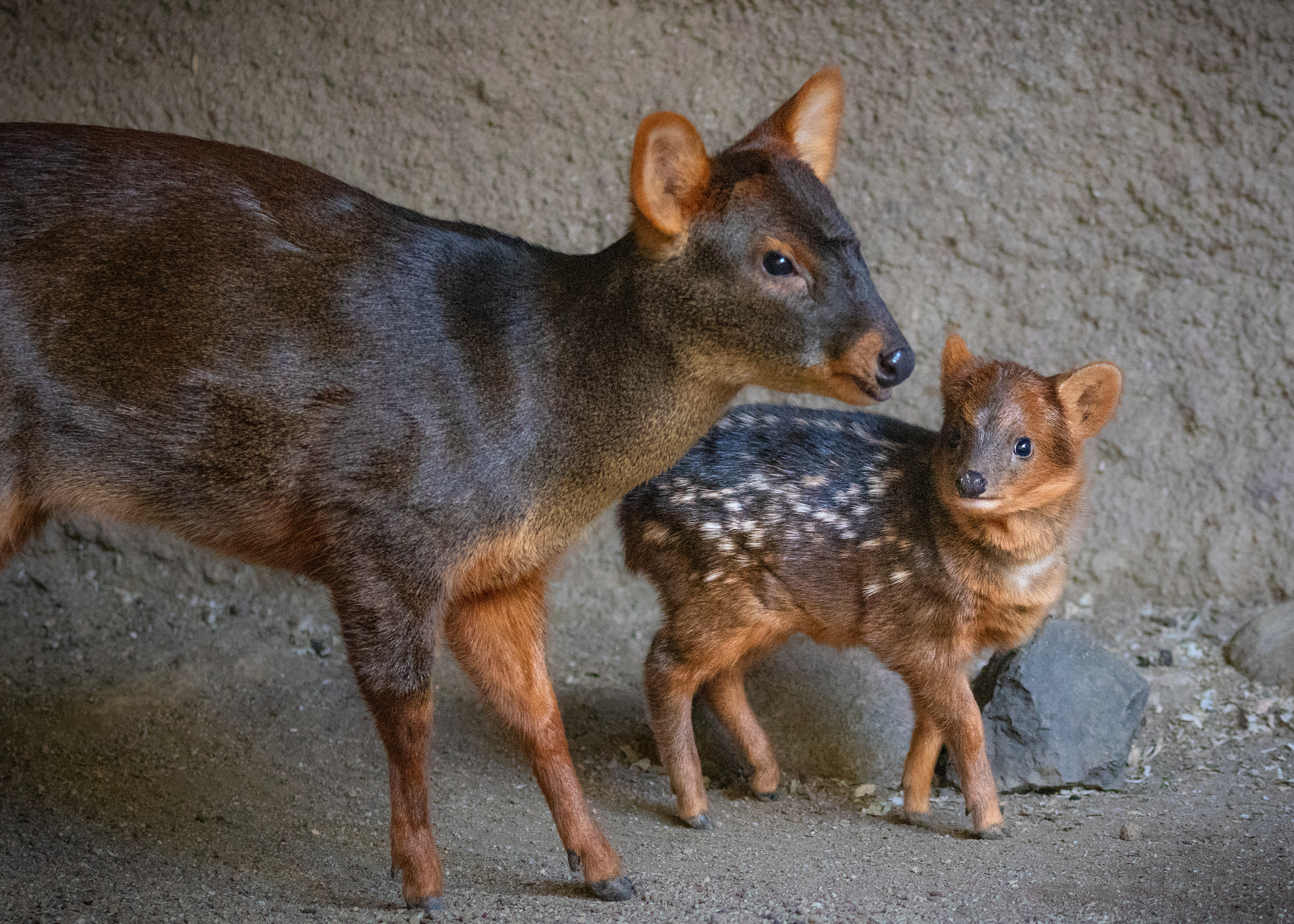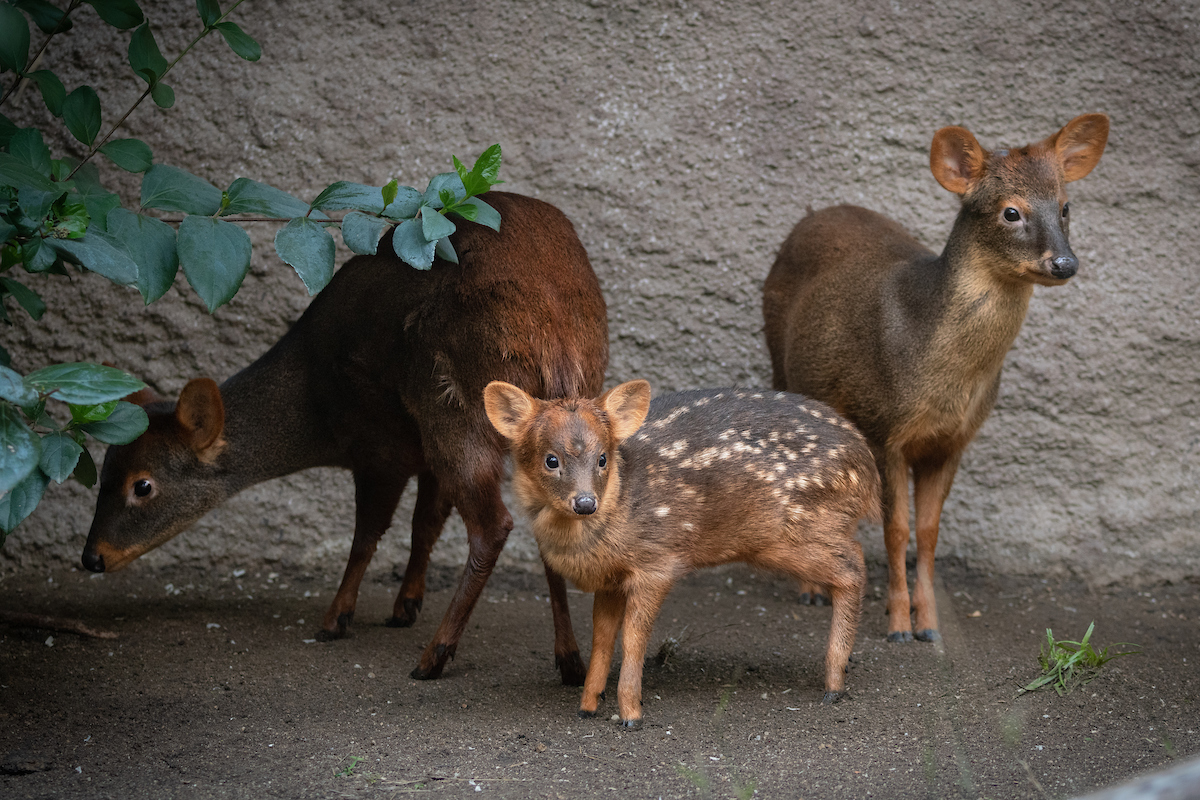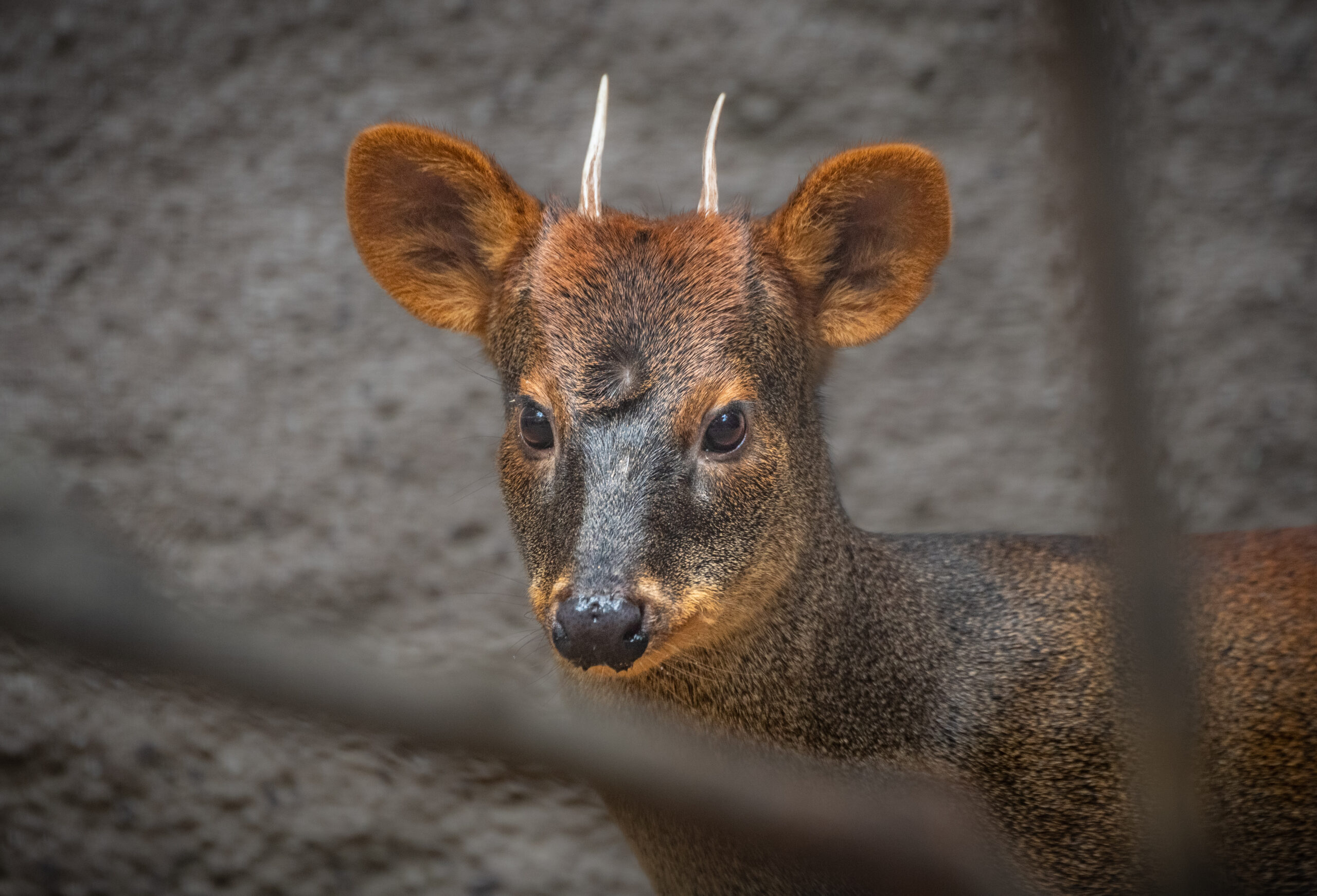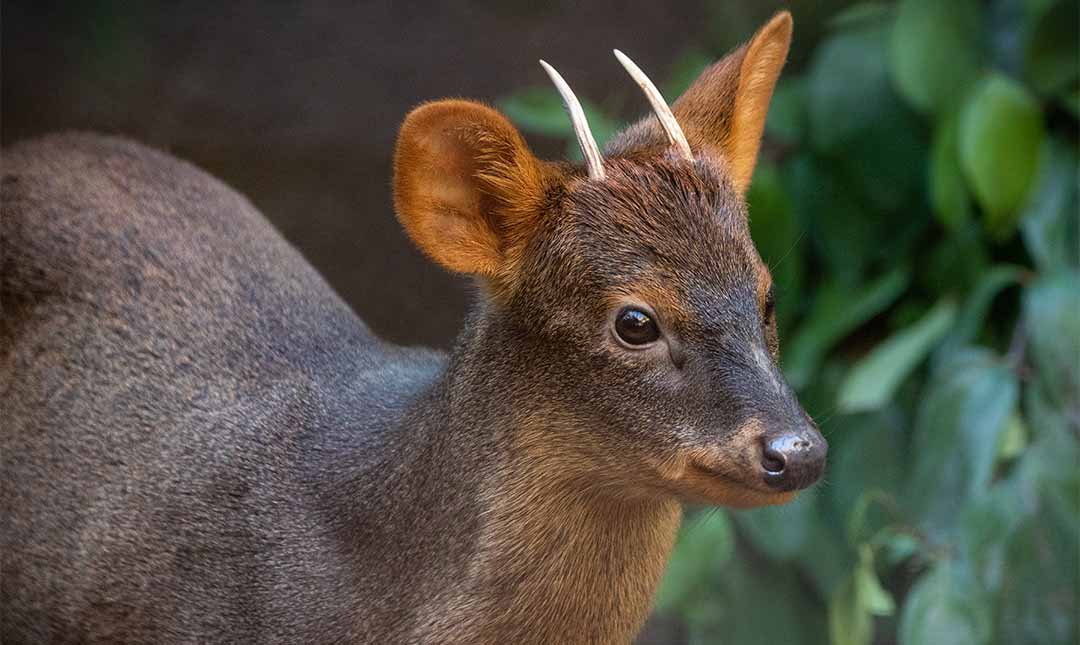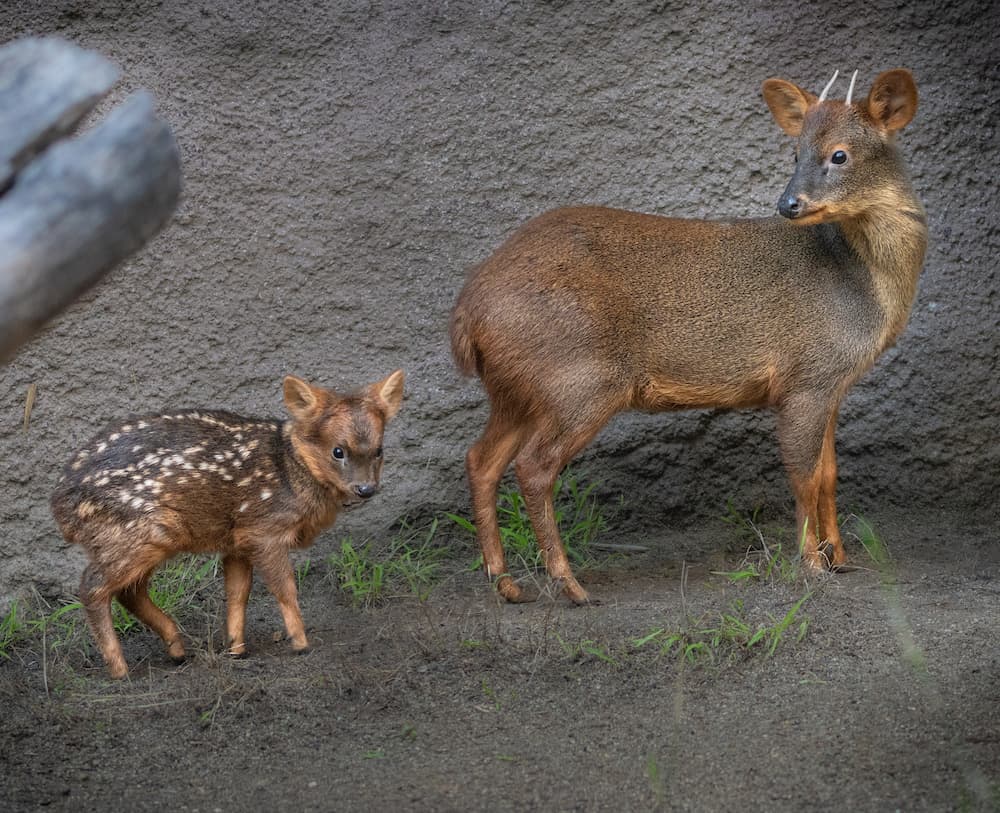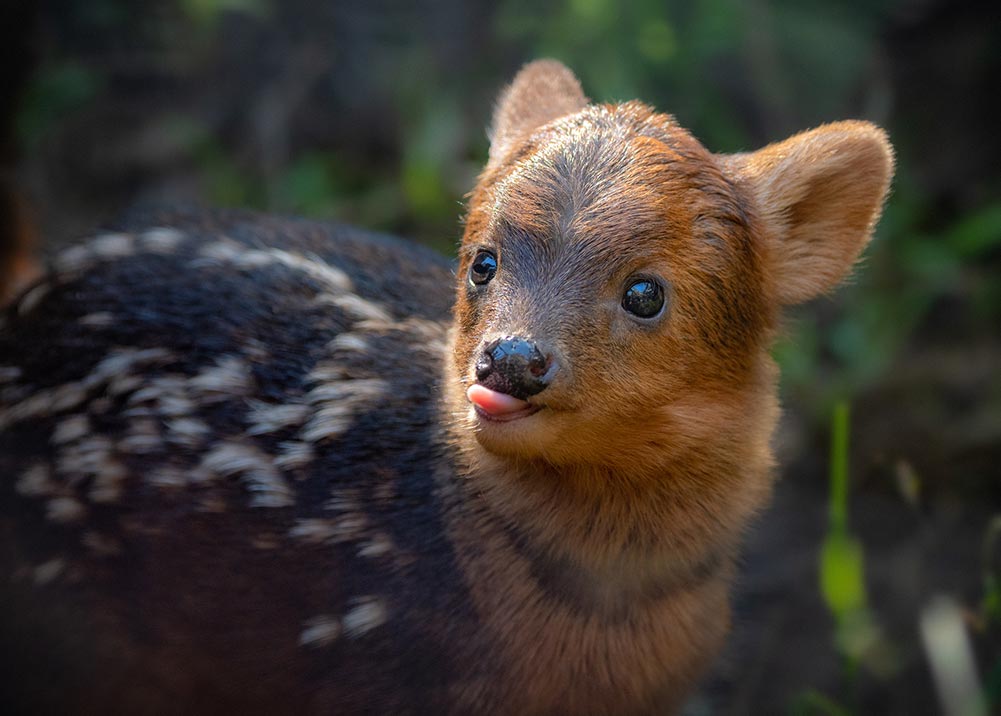About
The world’s smallest deer are labyrinth masters, creating networks of trails and tunnels through the forest undergrowth that lead to hidden places where they can safely feed and rest. They nimbly climb on fallen trees or stand on their hind legs to reach their favorite leaves or fruit. While foraging, they pause frequently to sniff the air for predators, which include foxes, feral dogs, cougars, small wild cats, and owls. If a threat is detected, they may sound an alarm bark, and run a zig-zag pattern to escape. If escape is not an option, the pudu will freeze. Many predators rely on movement to pinpoint prey, so by remaining motionless, the pudu has a better chance of blending into the forest. Pudu are most active at dawn and dusk. Because they are elusive and adept at hiding in their forest habitat, pudu is a challenging species to study.
Like most deer, pudu males have antlers. They are just three inches long and point backward so they do not snag on low branches. They are used to spar with rival males and, like all antlers, they are shed after mating season and regrown the next year. Resting and feeding areas are marked with dung heaps and substances from facial scent glands. Pudus are generally solitary outside of mating season. Males mate with multiple females, and after a seven-month gestation, a single spotted fawn is born. Only the mother cares for the fawn, who is weaned in one or two months and independent by about eight months of age. The southern pudu population is decreasing due to habitat loss, introduced disease, parasites, predation by feral dogs, and poaching.
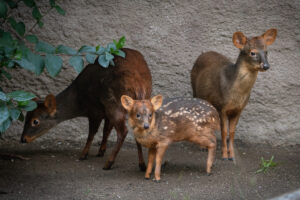
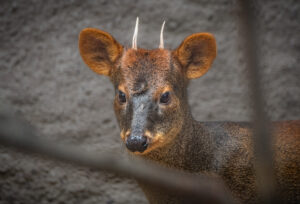

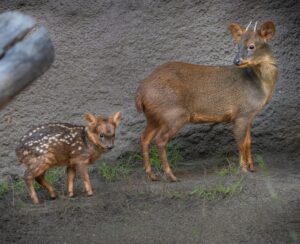
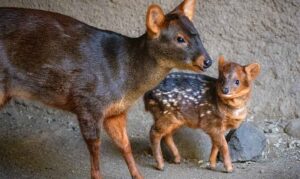
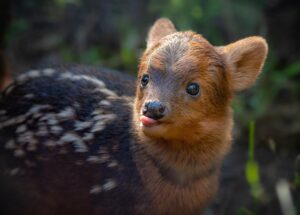
Habitat
Pudus inhabit the temperate rainforests of Argentina and Chile, preferring dense underbrush and bamboo thickets.
Diet
This herbivore eats fruits, berries, fungi, nuts, vegetation, and succulent sprouts; they seem to favor ferns, vines, shrubs, and leaves of small trees. Much of the water they need is obtained from the plants they eat.
Physical Characteristics
Pudus are 24 to 29 inches at the shoulder with a body length of up to 33 inches. They weigh up to 24 pounds and live 10 to 15 years.
LOCATION WITHIN THE ZOO
Although this animal is currently residing in the Australia section, the southern pudu is a South American species. See Zoo Map.

